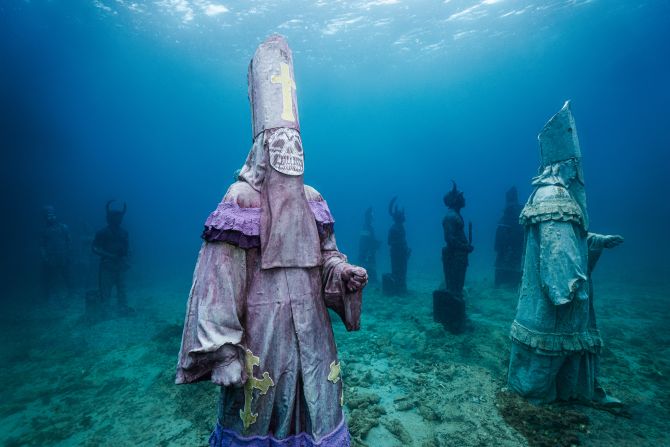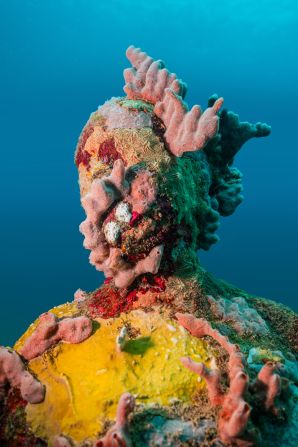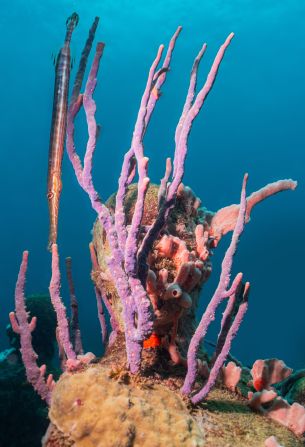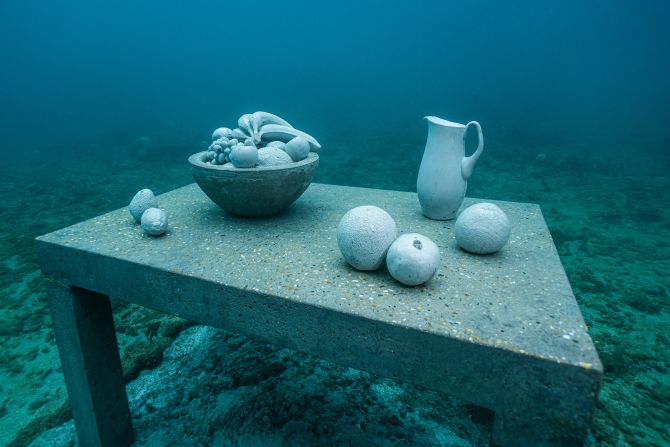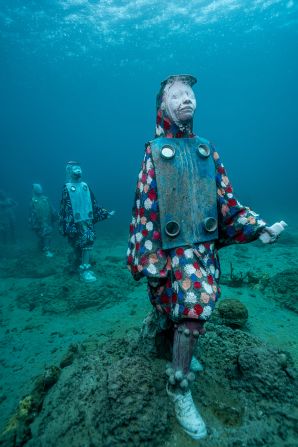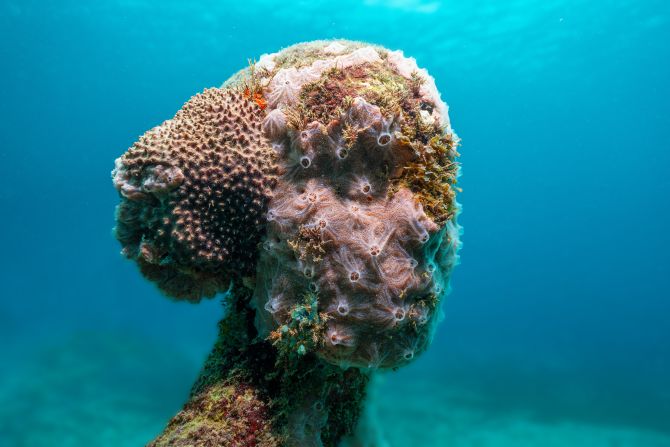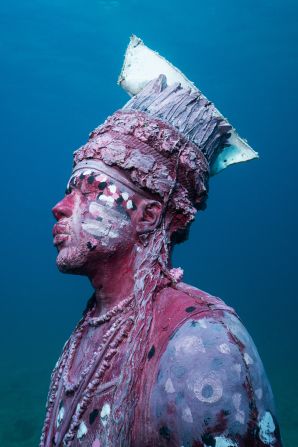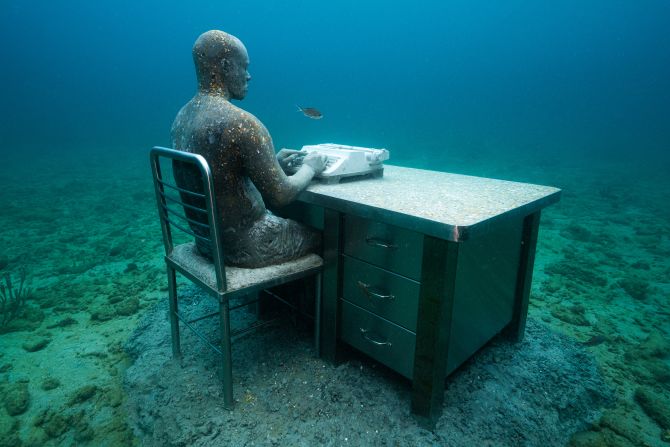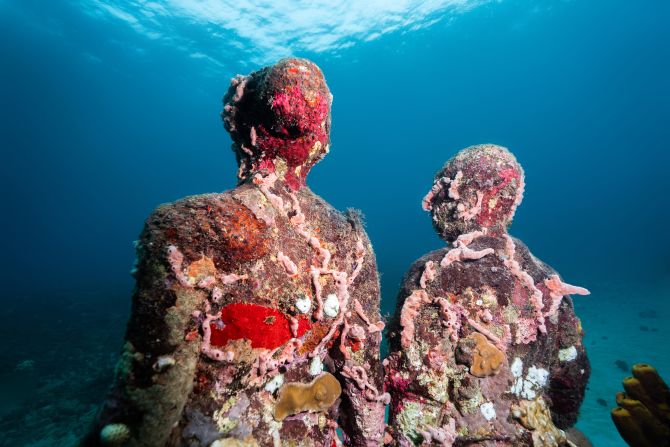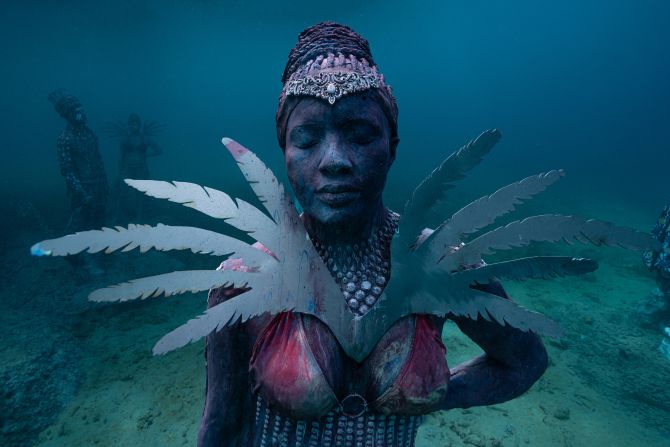The world’s first underwater sculpture park has just gotten a lot bigger.
Created by British sculptor and ecologist Jason deCaires Taylor in 2006, the Molinere Bay Underwater Sculpture Park in Grenada is now one of the Caribbean country’s most popular underwater attractions.
The captivating installation recently expanded significantly, with 31 new sculptures added to the site, situated in a marine protected area off the west coast of the island.
Among the new additions is “Coral Carnival,” a sculpture series based on Spicemas, Grenada’s hugely popular carnival that showcases iconic masqueraders such as the “Jab Jab,” a character with chains who is a symbol of freedom for Grenadians.
Underwater attraction
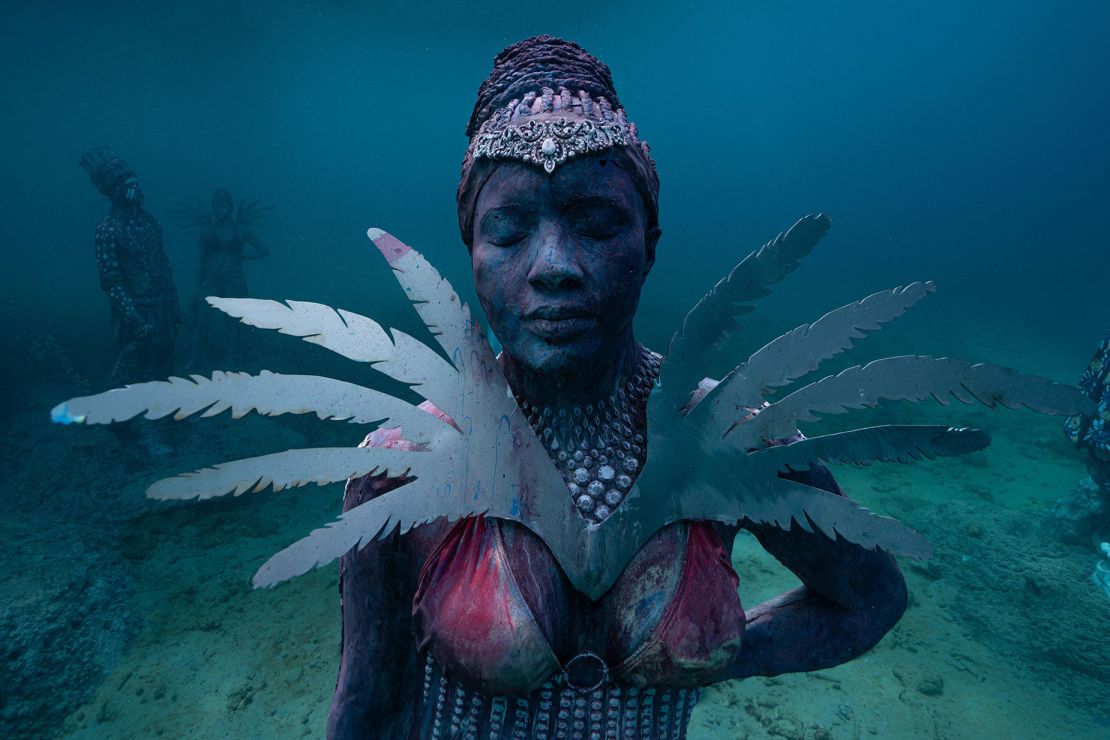
Commissioned by the Grenadian Ministry of Implementation and Tourism, the project aims to showcase Grenada’s culture and history.
“The carnival is obviously a very, very strong part of Grenada’s culture and history, so they wanted to tell that story,” deCaires Taylor tells CNN Travel.
“It’s been quite interesting learning about all the different masqueraders and the history behind them.”
Each of the sculptures, which were partly constructed in the UK, are based on real life people, who posed as models for the artists.
The majority of the new pieces were created by deCaires Taylor, who worked in collaboration with various local artists to make sure that they “were representative of the characters.”
Meanwhile, Grenadian artist Troy Lewis created four of the new sculptures, including the Christ of the Deep, a replica of the statue given to the Grenadian people in recognition of the help provided to the crew and passengers of the ‘Bianca C,’ which sank on the island in 1961.
Natural transformation

Made with high-grade stainless steel and pH-neutral marine cement, the sculptures are designed to act as artificial coral reefs, with holes and shelters to attract marine life such as octopuses and lobsters, creating a rather spectacular looking habitat.
According to deCaires Taylor, marine life had already made itself at home within the sculptures days after they were installed.
“There was an octopus that moved into the base of one of them, which is really nice to see,” he says, before going on to describe how a family of crabs had also moved into the base of one of the sculptures, while a stingray could be found in another.
“What’s quite interesting about these characters is the silhouettes are really, really strong,” he adds.
“They’re so unique that the silhouettes are quite striking from a distance. I haven’t seen that before.”
This also marks the first time deCaires Taylor has introduced color into his underwater sculptures.
“Normally, they’re very gray,” he notes. “This time we used natural pigments to actually paint the sculptures.
“So I’m quite interested to see how those change and whether they’ll be colonized in any different way. Marine life is very influenced by color.”
Aquatic installations
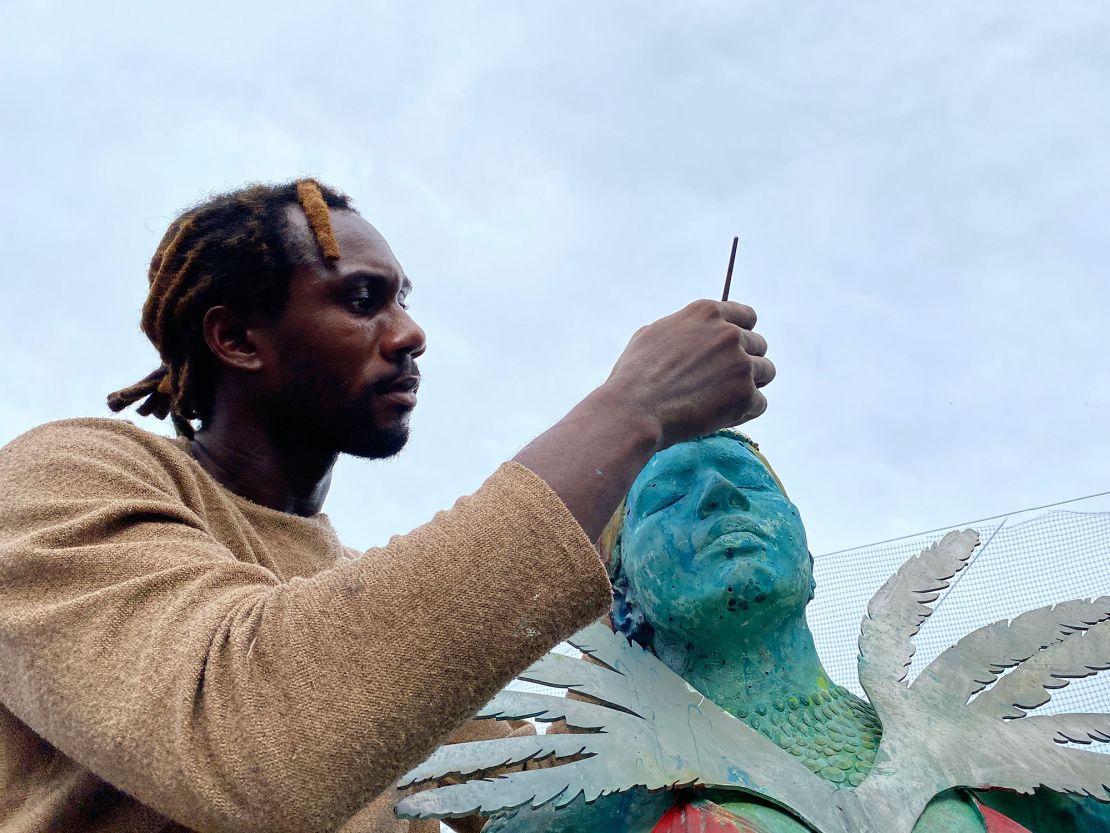
The exhibition was first displayed on dry land at Grenada’s Prickly Bay Marina for four weeks earlier this year – a first for deCaires Taylor, whose sculptures normally only show underwater. Visitors included Dickon Mitchell, the country’s prime minister.
“It’s something that I haven’t done in the past, and it wasn’t planned to be fair,” deCaires Taylor admits, explaining that it came about because the deployment company wasn’t available for a while.
“But actually, I think it’s quite a good idea to make it more accessible before it [the exhibition] goes in. I might start factoring it into all future works as sort of a longer public exhibit.”
The sculptures were painstakingly installed underwater in late October with the help of a crane, as well as some divers.
According to deCaires Taylor, the crane capacity is lower on the island than some of the other destinations he’s worked in, so the process of fitting the sculptures took longer.
“I spent eight hours underwater the other day, which is a bit of a record for me,” he recalls.
Coral Carnival, which is accessible via boat, has been open to the public since late October.
The new sculptures are installed at depths of between three to seven meters, and can be viewed by both divers and snorkelers, as well as those on glass bottom boats, provided visibility is good
The underwater sculpture park was originally dreamed up both as a conservation effort to help renew the marine life damaged by Hurricane Ivan in 2004, and a means to ease pressure on some of the more congested underwater areas on the island.
“I’d had this idea of creating something underwater for a long time,” deCaires Taylor says. “I just thought it would be such an interesting place to do something, and maybe it would draw tourists away from the other sites. And it would also sort of become a platform for marine life.”
“It’s been one of my favorite projects,” he admits. “And actually, some of the marine life that colonizes these sculptures is some of the best I’ve seen in all the different regions.
While deCaires Taylor went on to launch several underwater galleries, including the Museum of Underwater Art in Australia and the Museum of Underwater Sculpture Ayia Napa in Cyprus, the Molinere Bay Underwater Sculpture Park has remained hugely special to him.
Promoting ocean conservation

“That was what got me excited in the first place, seeing how they colonized and the artistry of nature really, supplanting what the human hand can do.”
DeCaires Taylor’s projects are largely centered around promoting ocean conservation, and he admits to being stunned by the changes to the sculptures, particularly in recent months.
“This year has been one of the hottest that’s ever been in Grenada and the sea is really suffering,” he explains.
“So there’s huge bleaching on some of the reefs. And it’s the first time I’ve seen bleaching on sculptures as well. So it’s exciting [to witness the colonization], but it’s also quite sad seeing what’s going on.”
He’s currently in talks to create a smaller park in Carriacou, Grenada’s sister island, with the focus on these particular issues once again.
“I’m very concerned about rising seas, especially on some of these small island nations. So I certainly want to talk about that.
“How sea temperatures are changing, and how fragile some of these places are.”
While deCaires Taylor is currently working on further projects in the UK, he’s already looking forward to returning to Molinere Bay to witness nature taking over this human creation further in the coming years.
“The one thing that’s slightly different with these particular pieces is there are loads of sort of elevations,” he says. “Horns, feathers and areas that kind of go up into the water columns. “
“So I’m really excited to come back in a couple of years time. Because I think there will be lots of filter feeding in sponges and corals, which should attach to them. So that will be good.”
